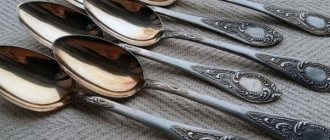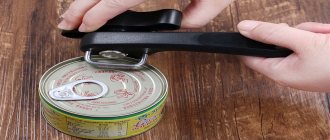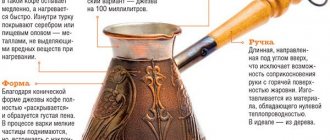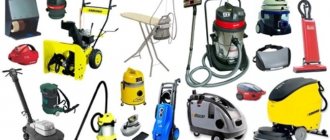When a magnificent celebration is planned, it is very important to properly arrange the cutlery. This refers to the ability to properly set the table, so many people attach special importance to this.
In fact, there is nothing complicated about the arrangement of forks, spoons and knives. But even here there are some subtleties and peculiarities. Many people encounter difficulties precisely at the moment when they should arrange the forks, because the knife should always be on the right side, but it is not clear what to do with the fork, because most people are right-handed.
Where you should put the fork, what to do if there are several of them, and what to do with additional products - later in the article.
Rules for using devices in different countries
On different sides of the Atlantic Ocean there are different etiquette requirements regarding how to properly hold cutlery and the nuances of using them. The American version is more liberal than the European one. However, it is worth familiarizing yourself with the basic rules of etiquette in different countries.
In European etiquette
If a table is set in a restaurant according to the requirements of European (continental) etiquette, the following general rules are followed:
- The knife is taken in the right hand with the index finger extended along the blunt side of the blade. The remaining fingers tightly clasp the handle so that it rests against the base of the palm.
- The fork is held in the left hand, tines down. The index finger “supports” it from behind, but not too low, otherwise it will get into the food. The brush completely covers the handle of the device, its base rests on the palm.
The pieces cut with a knife are brought to the mouth on a fork so that the teeth are directed towards you and down. At the same time, the elbows are relaxed and do not lie on the table. If you have several forks, the one closest to the plate is for the main course, the farthest one is for the salad.
The knife is held with the right hand, with the index finger extended along the blunt side of the blade, and the fork is held with the left hand, with the teeth pointing down.
Pieces cut with a knife are brought to the mouth on a fork so that the teeth are directed towards you and downwards
If there are several forks, the one closest to the plate is for the main course, the farthest one is for the salad.
In the American version
The answer to the question “how do people who know the rules of etiquette hold a fork correctly in the American version” is like a pen or pencil. The teeth “look” down. Hold the base of the device handle with your middle and thumb, and place your index finger on top. Regarding how to hold a knife correctly, the requirements of both options are the same.
In American etiquette, it is allowed to change places of cutlery. When several pieces have been cut, the knife can be placed on the edge of the plate. Instead, they take a fork in their right hand and continue to eat. When bringing food to the mouth, it is held with the teeth facing up.
Regarding how left-handers hold cutlery: etiquette does not provide for any “relaxations” for them. The knife should also be in the right hand, and the fork in the left. Before an important official event, it is recommended to practice acting this way. Of course, home lunches and dinners, where the rules of etiquette are less formal, make it possible to use a fork and knife as conveniently as possible.
Where to turn the teeth
The question regarding the tines of the fork may indeed arise, since in modern restaurants and cafes the table is not always set in advance in anticipation of guests.
If all the cutlery is prepared, and you sit down at the table, where everything is already laid out, then the fork will definitely lie with the tines facing up. But if you came to a cafe or just waited for your turn at a table, it often happens that the waiter cleared the place just before you took it. Of course, he didn't have time to set the table with the forks and spoons perfectly arranged in the right order.
The fork should be held lightly, using the index and thumb to lightly press it against the bent middle finger.
In this case, the devices are often brought wrapped in a napkin. This is a sign that the fork and spoon are perfectly clean, and you can be sure that your meal is hygienic. If the fork is wrapped in a napkin, then it can be placed either upside down or down. Usually they are not visible at all, you can only guess from the outlines of the package where the teeth are. It turns out that placing a fork with the teeth down on the table is only permissible in one case: if it is served wrapped in a napkin.
Nuances of use when eating different dishes
As a general rule, if a dish consists mainly of small parts, you can do without a knife. When there is a large piece on the plate, you need to use both utensils. But a lot depends on what exactly is served to the guests.
Meat and poultry
A meal is rarely complete without a meat dish. A fork and knife are almost always needed here. Important details:
- According to the rules of European etiquette, a piece of meat lying on a plate is not cut immediately. 2-3 small pieces are gradually separated from it, eaten, and only then the remaining part is cut. Do the same with sausages and sausages, but they need to be additionally peeled. The American version of the rules allows you to immediately divide a large piece into small ones, put the knife aside, and then eat only with a fork.
- The chops can be cut into several large pieces at once. They eat them by gradually cutting off the flesh from the bones.
- Cutlets, meatballs, and other dishes made from twisted meat are eaten with one fork. Do the same with small pieces stewed in sauce (stew, goulash).
- Ham, ham, sausage, boiled pork, and other meat delicacies are served to the table already sliced. They are transferred to their plate with a special serving fork or their own, holding them with a knife so as not to drop them.
Additional decorations for serving
The decor should not be conspicuous; it complements the serving of dishes. Inappropriate:
- high compositions;
- vases with huge bouquets blocking the view;
- strong-smelling bouquets; guests may be allergic to them.
Decorate with napkin holders and candlesticks. Originally folded fabric napkins are an ideal option for decorating a formal table. Flowers from vegetables and fruits, edible compositions are appropriate for any dinner, they have a place on the dessert table.
A win-win option is to use flowers. Usually they are placed in the middle of the table - it can be a bouquet or composition.
Knowing the secrets of serving, you can turn a traditional meal into a wonderful meal, where everyone will enjoy not only the food, but also the contemplation of the feast. It's so easy to give joy to your loved ones! Make every family lunch and dinner special.
General etiquette for handling knives and forks
Any self-respecting person should know in which hand to hold a knife and fork according to etiquette.
The cutting object must be taken in the right palm. This way there is less risk of cutting yourself and it is easier to chop food. At the same time, hold the fork to the left. It is allowed to take cutlery in the right hand if a person eats a dish that does not need to be cut.
Point the teeth down. Press the end of the cutlery handle into your palm. Do not handle objects too close to the base.
After finishing your meal, place the cutlery parallel to each other on the plate. It is prohibited to place them on the table or on a napkin.
If you pause during a meal, place the cutlery with one end on the plate and the other on the table. This way you will show the waiter that you haven’t finished your dish and are going to return to it.
Table textiles
Table textiles are a part of everyday and festive table decoration that should not be underestimated. Washable place mats are well suited for daily use; for formal occasions, a set of tablecloths and fabric napkins is suitable.
Choosing a tablecloth
The tablecloth is selected according to the shape of the table so that the ends hang 25-30 cm from the edge and based on the color scheme of the interior. The bright color should be duplicated in the decor and serving, otherwise it is better to choose a neutral white option. For daily use, a material with Teflon impregnation or a set of several textile options is better suited for replacement. For a special occasion, it is better to take the option made of thick linen. Synthetic materials are easy to wash, but if even a small spark from a lit candle gets on them, terrible things can happen.
Square plates for table setting
Take the ironed tablecloth widthwise with both hands, shake it and pull it towards you. The transverse and longitudinal folds should be exactly in the center of the table.
How to hold cutlery
There are a number of recommendations on how to use cutlery correctly. In the United States of America, the rules of decency are different from those in Europe.
According to European etiquette
According to the rules of etiquette in European countries, forks are placed to the left of the plate, knives are placed to the right. If there are several utensils, the outermost ones are used for salads and snacks. Meat or fish dishes should be eaten closer to the plate.
Hold the knife in your right hand. The index finger is placed along the blunt side of the blade. Others grab the handle. It is necessary that the end rests against the base of the palm.
The food is crushed by sawing movements of the blade. The fork is used to hold food. Point the cloves towards yourself. When you bring the piece to your mouth, leave the teeth pointing down. Devices are not transferred from hand to hand.
Serving rules and choice of dishes
There is no need to invent the obvious when thinking about what table setting items should be purchased, how to use them and arrange them. The norms of etiquette in matters of festive and everyday serving are a practical system that has been worked out over centuries, and which is easier to use at home than it seems.
Tips for everyday table setting:
- use coasters. They look elegant and protect the tablecloth from unnecessary stains;
- deep plates for first courses are required;
- Place a plate for the side dish under the container for the first dish;
- arrange your utensils in advance. This will save you from unnecessary fuss at the table;
- don't forget about napkins. Use both paper and fabric ones for serving.
Festive table setting
How to eat different foods correctly
The nuances of using devices depend on what dish you need to eat. If the food is finely chopped, you can use a fork or spoon without a knife. Large chunks will have to be chopped first. It is recommended that you read the quick guide to choose the best method.
If the treat is laid out in large pieces on a cheese plate, the owners will have to use knives. For hard varieties, grater knives are used. The super hard ones are served with special spears, with the help of which guests break off pieces. For medium-soft products, large knives with slots on the blade are used. Soft varieties are cut using string knives.
Meat and poultry
To eat meat dishes, you must use a fork and knife:
- The steaks are not ground immediately. You need to cut off 1 small piece, which is convenient to chop.
- To eat a stew or stew with sauce, you will first have to separate the bones from the edible part. Anything unfit for food is placed on the edge of the plate. Taking bones with your hands is only allowed in situations where they are in a paper wrapper.
- To eat the chop, first cut it into 3-4 approximately equal pieces. Then gradually remove the pulp from the bones.
- If the roast was served in one large piece, the host is responsible for chopping it and serving it to the guests. First, important guests and girls receive a portion. The distribution starts with the oldest woman.
- Owners must first cut sausage and ham into slices. If there is a shell left on the treat, the piece is pierced with a fork, after which the inedible part is removed using a knife.
- Sausages should not be eaten with your hands. It is necessary to cut off small pieces and then peel them. It is better to do this gradually so that the food does not have time to cool down.
- For cutlets, meatballs, and dumplings, the use of a knife is not required.
- Chicken legs are eaten with a knife. The treat is held with a fork, and the meat is cut off the bone with a blade. Eating with your hands is only allowed if there is a rinse bottle on the table.
- Do not use cutlery for crispy bacon, as the dish can easily crumble. Soft bacon is eaten with a knife and fork because eating it makes your fingers greasy and sticky.
Dessert
Cakes and pastries are consumed using a special dessert fork with 2 prongs. If the dessert is triangular, eat the narrow edge first, then move on to the wide one. Cakes on a hard base will have to be cut with a knife. Eclairs and bagels can be eaten with your hands. If a person does not want to get dirty, he can use a dessert fork.
For jellies and mousses, use a spoon. The bones are carefully removed from the mouth and placed with a spoon on the edge of a saucer or on a napkin. There is no need to finish the juice remaining in the bowl. For fruit you will have to use a knife and fork. Small pieces are cut from the fruit. Cookies and gingerbread are taken with fingers. Cutlery is not required to eat these desserts.
The Importance of Choosing the Right Table Color Scheme
When setting a table, the tablecloth is chosen according to the type of event. For everyday use, variegated or plain fabric with acrylic coating is allowed, the main thing is that it matches the colors of the dishes.
Shades of red stimulate the appetite, while cool blue tones pacify it. Yellow and orange create a good mood, green have a calming effect.
The principle of arrangement of cutlery: the dish that is served first is the farthest cutlery.
It is better to decorate a romantic dinner in dark colors so that burning candles look advantageous. There is no need for unnecessary details on the table that interfere with communication: vases with flowers, multi-tiered fruit stands.
A formal event requires moderate, muted tones and crystal tableware. Themed parties will be memorable if the tablecloth contrasts with the colors of the dishes.
Setting a holiday table is also an opportunity to show your creativity.
Where does table setting begin?
Serving begins with the selection of cutlery. And their choice depends on what dishes you plan to put on the table.
Even if you plan to change dishes ten times, you shouldn’t be afraid, and even more so, you shouldn’t try to cram all the available appliances in the house at once, since they simply change during the course of the play.
We ate lunch - we put away the dinnerware and take out the dessert set. Or fish, or fruit, or tea. It doesn’t matter, the main thing is to understand the point: to choose the right cutlery for each stage of the feast and arrange them according to the rules.
Once you have decided, you can cover the table with a beautiful tablecloth, under which it is advisable to put some kind of fabric so that the dishes do not knock when you put them on the table. Immediately place additional serving utensils on the tablecloth, which are chosen depending on the type of dish. You will find an approximate list of them below.
And after that you need to put the main appliances on the table. But for this it would not hurt to know exactly which of them serve what. Read the next block and you will be up to date; we have described everything in as much detail as possible.
Common mistakes
People often forget which side they put their oyster fork on. This is the only fork that should be placed on the left.
People may choose the wrong utensils (for example, serving a fish knife instead of a table knife). Items should not be used for other purposes.
A mistake is considered to be the wrong choice of tablecloth. For breakfast or a formal reception, white is best. Lunch and dinner should be on a product of a neutral shade. Colorful and patterned ones are allowed to be used only for children's parties.
Don't forget about napkins. Their number should be equal to the number of guests. Linen products should be used. Paper ones won't work.
Often the knife blade is directed in the direction opposite to the plate. This arrangement is considered incorrect.
Serving sequence
Follow the layout algorithm when you set the table:
- place a piece of thick fabric on the table that will prevent the dishes from knocking;
- lay a clean, carefully ironed tablecloth in a neutral color scheme;
- arrange the plates;
- arrange forks, knives, spoons, starting with those located closer to the dish;
- arrange glasses from largest to smallest, wine glasses, glasses;
- set napkins;
- decorate the table (for example, with a vase).
Dessert table utensils
The third course is eaten using a triple set. The dessert knife is shaped like a spatula, but smaller than a fish knife. It is held in the left hand to pry small pieces and cut large pieces of fruits and berries. Cakes and pastries are eaten using a snack fork and knife. Select berries from compotes with a dessert spoon.
Dessert table utensils also include spoons for:
- coffee - with a narrow, sometimes oval, handle and a shallow cup-shaped part;
- sugar - popularly called tea.
A coffee spoon and a teaspoon lie on the right side of the saucer with a mug. When stirring drinks, avoid glass clinking.











